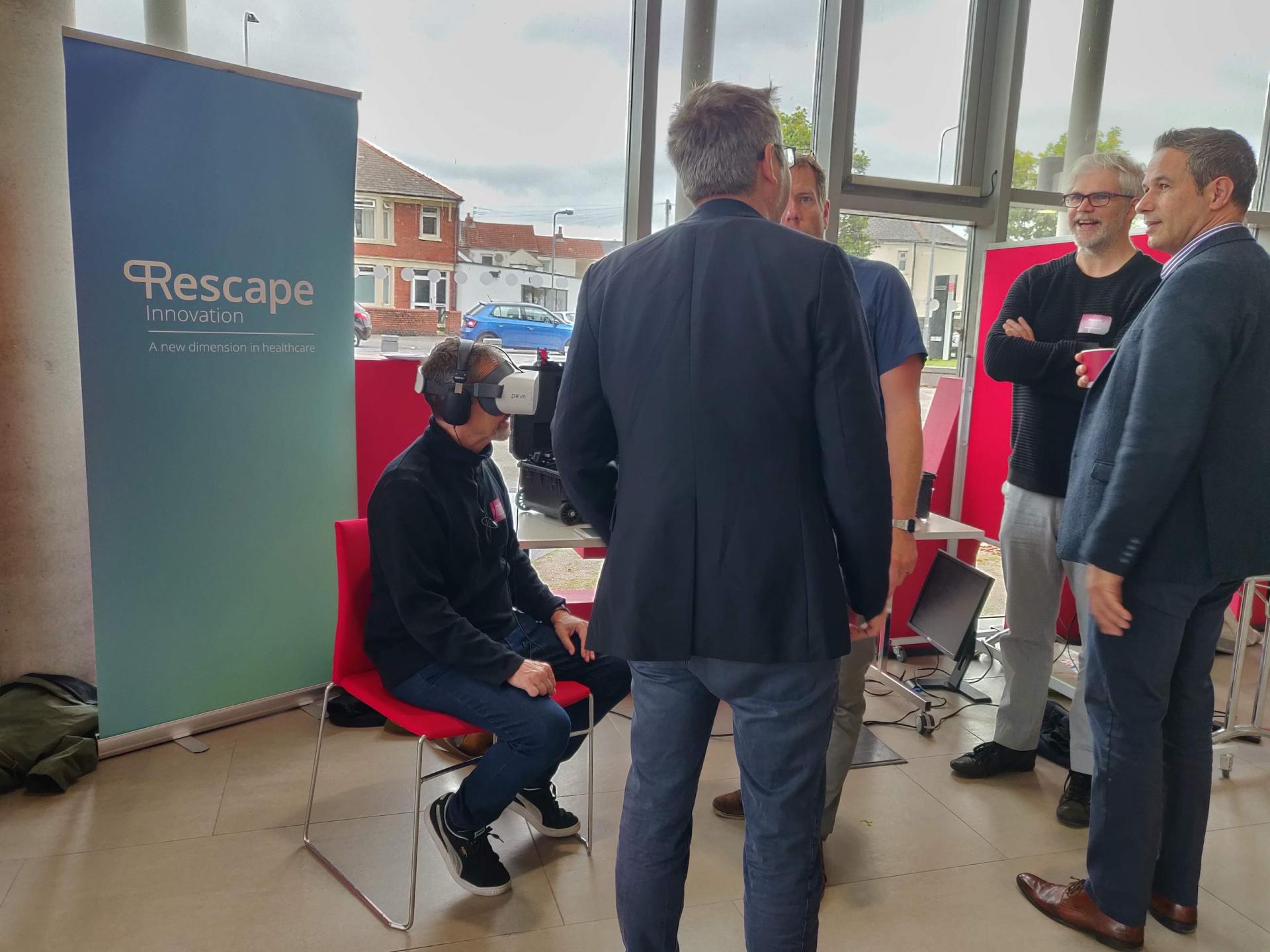The Immersive Technologies in Academia and Industry (ITAI) workshop brought together innovative examples of immersive tech from both academia and industry for the first time at Cardiff University in September.
The event, which was organised by School of Psychology Research Associate Dr Danlu Cen and pHd student Hellen Jing Yuan with Immerse UK’s Asha Easton, consisted of a series of lightning presentations on immersive technologies by a number of academics and industry experts.
A number of our Clwstwr-funded R&D projects are working within the field of immersive tech with one of them, Rescape VR, talking about their work and the use of VR in health innovation on the day.
One of our #ClwstwrCohort projects @RescapeVR @kevmoss talks about “making immersive therapies a reality today” and the use of VR to relieve pain during childbirth #ITAI2019 @ITAI_2019 pic.twitter.com/g1jUJz4mbj
— Clwstwr (@ClwstwrCreu) September 12, 2019
The Clwstwr Producers are interested in the potential of immersive to achieve innovation. Here, they share some reflections from the day:
Sally Griffith: "It was inspiring to see the tremendous level of immersive activity happening across the creative sector and academia. Despite obstacles and challenges, which we all recognised, people have found ways to work well together to the benefit of both parties, and ultimately for audiences.
The room was full of inspiring and inquisitive people who wanted to do good things and it was useful to see that money was an important, though not the only, catalyst for motivating people to collaborate. "
The opportunity to socialise, network, and to play with equipment and software was invaluable, and encouraged many more conversations as the day progressed."
Greg Mothersdale: "Various discussions on the day acknowledged the complexities of academia and industry working together. In the case of Clwstwr, the creative screen sector moves very quickly with a large freelance workforce and many micros and SMEs who may not have the resources to commit to largescale innovation programmes. So case studies of successful collaborations are very useful for us to know and share - such as Dr Danlu Cen, a researcher who works on VR technologies with Vicom - it was short, focused and highly regarded."
Danlu talks about her placement with Vicom as well as other research with industry here.
Gavin Johnson: "Tom Freeman’s Use of immersive acoustics and head-mounted displays in active listening and looking was really interesting. Sound is sometimes the last thing people think of when producing immersive content, but he demonstrated that sound is critical to an experience and combined with visuals it creates very unique experiences."
You can find out more about Professor Tom Freeman, of Cardiff University School of Psychology, and his research here.
Adam Partridge: "It was great to hear James Simpson talking about how mixed reality pre-visualisation is being used in production design with the RSC and Royal Opera House.
"It is always interesting to see immersive technologies applied in new ways."
Find out about James Simpson, who is a lighting visualiser.
We’re at the #ITAI2019 conference to hear some fascinating talks about Immersive Technologies in industry and academia. @jamessimpsonLX (@TheRSC, Magic Leap Digital Fellow/Rose Bruford College) talks Mixed Reality Pre-Visualisation for Theatre Production Design pic.twitter.com/zfdy8O6r1P
— Clwstwr (@ClwstwrCreu) September 12, 2019
Research Associate at Cardiff University, Danlu Cen, who was part of organising the workshop said:
We had a varied programme, including 18 talks and eight demos from both academia and the industry. A total of 65 people from different backgrounds and organisations attended the event. During the breaks and wine reception, I saw a lot of meaningful conversations going on. I hope the contacts made in the workshop will give rise to fruitful collaborations in the future.
ITAI provided those interested in virtual reality, augmented reality and mixed reality, an opportunity to communicate their projects and initiate possible new collaborations. The one-day workshop was held at the Hadyn Ellis Medical Research Facility and partners included the Econonic & Social Research Council, Innovate UK, Immerse UK, Creative Cardiff, School of Psychology and Cardiff University.
To find out more about ITAI or get involved, visit the website.

